Train Like a Pro to Take Your Golf Game to the Next Level
Mar 29th 2017

Have you ever dreamed of playing like the pros? Maybe you think that dream has long passed, but it’s never too late to improve your golf game. Unfortunately, unlike the pros, many of us don’t have eight hours to spare every day to train and practice. So, we need to train smarter, not harder.
The most effective way to practice is to condition your body to mimic the actions of the real game as closely as possible. In other words, don’t rely on traditional practice methods which encourage repetitive, unfocused shots. Try to incorporate elements of the game into your training regimen and watch your skills move to the next level.

Assess Your Strengths and Weaknesses
Every golfer has different needs and ways of playing, so it makes sense that to begin training like a pro, you need to assess where the weaknesses are in your game. Pro golfers understand when something is lacking in their game and will either address the weakness directly or return to the fundamentals.
To assess your strengths and weaknesses, pay attention to your game. Note where your short game is lacking or whether you have enough power behind your swing. This will give you the starting point for developing a professional training regimen to take your game to the next level.

Create an Exercise Regimen
Just like any other sport, golf players are required to be fit and athletic. Pro golfers know that a major contributing factor to a good game is a well-conditioned body. Golf may not appear to be a strenuous sport, but it uses explosive muscle movements in the same way that a sprinter explodes off the starting block. Incorporating a strengthening routine, as well as some light cardio, will make a huge difference to your golf game. Try some of these exercises which target the main muscle groups needed during a game.
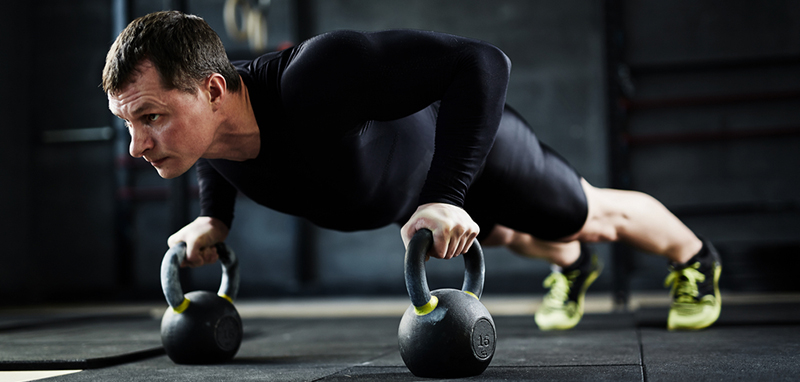
Seated Rotations
The exercise improves mobility and flexibility in the torso, which is an essential component for a powerful swing. The band adds resistance to further strengthen your core and upper back.
How To:
- Loop the resistance band around the door jamb
- Position a chair approximately 2 meters away. Sit with your back straight, holding the band with both hands, which should be facing the door.
- Twist your torso (not your arms) to the opposite side.
- Return to your original position, Repeat 1–3 sets of 10–15 repetitions.
Medicine Ball Throw
The weighted ball adds resistance to build strength in the upper body and core, but it also improves the explosive twisting mobility needed during a game.
How To:
- Stand upright facing a solid wall (this exercise is best done outside against a brick or concrete wall), holding the medicine ball at your waist.
- Twist away from the wall 90-degrees.
- In one fluid motion, rotate hips first back toward the wall, throwing the ball at the point you were originally facing.
- Catch the rebound. Repeat 5–10 times.
Glute Bridge
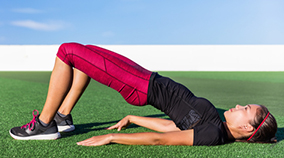
Pro golfers know that power comes from your large muscle groups, not your arms and shoulders. The glutes represent one of the largest muscle groups in the body, and they are the key to making long, powerful shots. The glute bridge not only strengthens these muscles but also increases core stability.
How To:
- Lie on your back with your knees bent at a 90-degree angle and your hands beside your body, palms facing down.
- Squeeze your glutes and lift your hips upward until only your shoulders remain on the floor. Your body should form a straight line from your shoulders to your knees.
- Slowly lower your hips back down and repeat 10 times.
Goblet Squat
Another great exercise for building the large muscles groups in your legs and glutes is the goblet squat. You also need to engage your core during this exercise, so it improves your core strength as well.
How To:
- Stand with your feet slightly splayed and shoulder-width apart.
- Hold a dumbbell or kettlebell with both hands at chest height, keeping your elbows pulled into your ribcage.
- Lower your glutes until your hips are lower than your knees but do not let your knees extend past your toes.
- Slowly rise until you reach your starting position. Repeat 10–15 times.
Curtsey Lunge
The curtsey lunge is an advanced form of the traditional lunge, which works out your glutes and quads, but this exercise has the added benefit of lengthening and strengthening your hip muscles. These are essential for a solid downswing and follow-through.
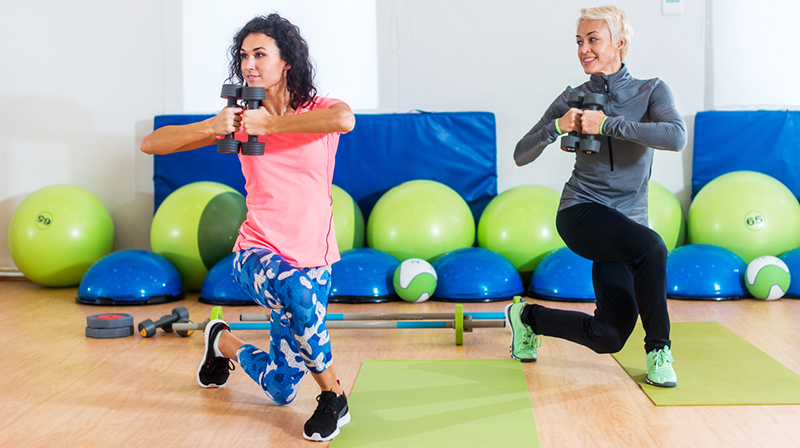
How To:
- Stand with your feet hip-width apart and your hands clasped in front of you.
- Take a step 3 feet back with your left leg, crossing it over behind your right leg.
- Bend your knees while lowering your hips, until your right thigh is parallel to the floor.
- Return to your original position, and repeat on the opposite side. Repeat entire sequence 10-15 times.

Golf Drills
Though improving fitness, strength, and flexibility are all important parts of taking your game to the next level, it is also important to get out to the range with a specific practice regimen in mind to avoid wasting your time and energy mindlessly hitting shots. Professional golfers will take the time to perform drills in addition to their regular practice regimen.
Drills, unlike exercising for fitness, are sport-specific movements to enhance your game. Drills allow your body to mimic the same movements performed during a game to create muscle memory and improve technique. Pro golfers use drills to work on specific elements of their game, whether they want to improve their putting game or increase the power of their downswing. Here are a few drills that the pros use to improve their technique
Left Hand Line, Right Hand Feel
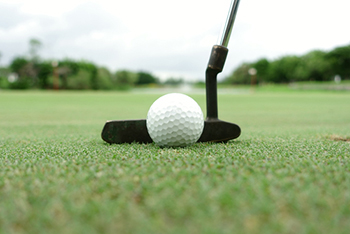
Tiger Woods has often been seen using this technique to hone his putting game. This drill allows golfers to better understand which hand directs the balls and which applies force. Head to the putting green and place balls at various distances from the hole. Putt all balls using only the right hand. Then, set up the balls again, and putt only with your left.
Take notice of how the blade of the putter moves, and which hand feels more comfortable. This will show your dominant hand, which is the hand you should use to putt.
Forceful Upswing
Amateur players often shift their bodies upward on the upswing and lose leverage, whereas professional players will apply more force to coil their backswing, ready for an explosive downswing. To help increase the amount of force in your upswing, take a block of wood and place it behind your club, and then use the club to move the block of wood backward on the upswing. The added resistance will train your body to apply the same force during a game.
Two Ball Take Away
Pros use this drill to gauge initial swing path and assist in establishing a rhythm. Place a ball behind your club at setup. When you swing, you will push the ball backward. After completing the swing, check where the ball behind your club rolled. If it rolled in a straight line, your alignment and position are within range. If not, make small adjustments and practice the drill again.
Stick Aiming
It is important to maintain a lock on your target when driving. To improve their aim, pros often use sticks to aim their shots.
Lay two sticks (or clubs) either side of the ball, and another approximately 12 feet in front of the ball aligned with the target. Hit a few shots either side of the stick to check the ball flight. This will enable you to adjust your swing for better aim.
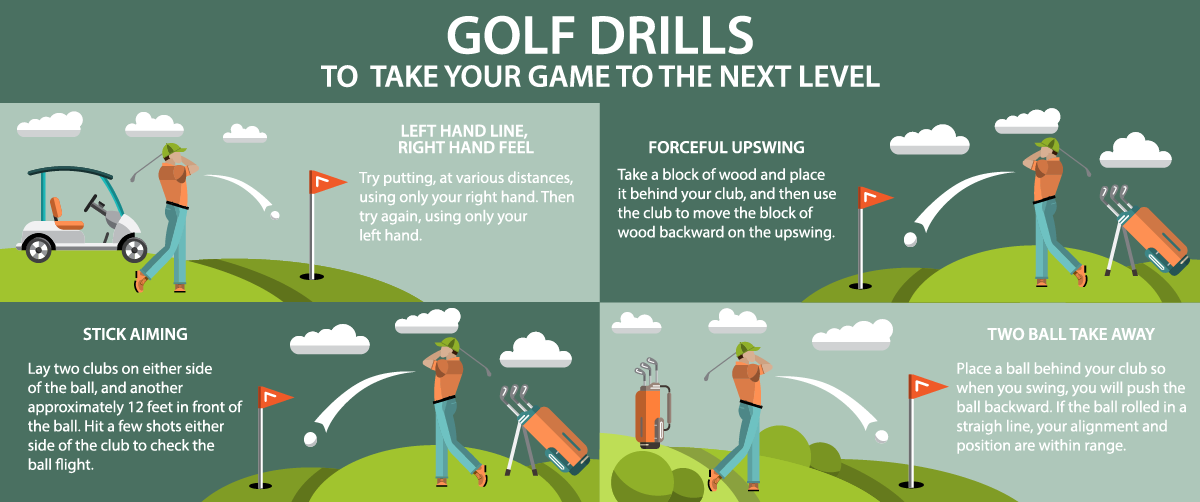

Work on Your Long and Short Game
Pros work on every aspect of their game, not just driving or putting. However, most amateur golfers spend the majority of their practice time on the range bashing at balls to improve their distance and power. This method of practice is ineffectual for two reasons: first, there is no focus to the practice regimen, and, second, there is no balance.
When devising an effective practice regimen, ensure you begin by allocating equal time to both the long and short game. For example, if you have an hour to practice, spend 30 minutes on the range and another 30 minutes practicing putts and chips. As you progress and notice where your weak points are, that ratio can be adjusted in favor of your weaker game.
The Short Game
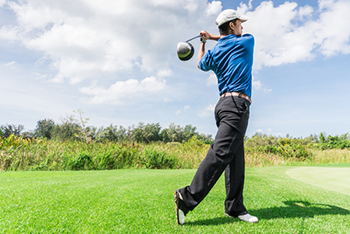
Most pro golfers know that improving your short game goes a long way to improving your overall performance. Although it can be frustrating, practicing difficult chip shots, bunker shots, and putts will help you to become a more creative player. Here are a few tips the pros use when practicing their short game:
- Get into the sand. Though no golfer ever wants to end up in the bunker, probability suggests that, at some point in a game, you will end up needing to make a sand shot. These shots are notoriously difficult and can often contribute to a poor score. Practicing bunker shots consistently will help you to get out of the bunker quicker.
- Don’t cheat yourself. Practice chipping from poor lies instead of just the short grass on the fairway. Challenging yourself with some difficult chip shots means you will be prepared for almost any eventuality on the course.
- Practice the short, short game. Short putts may appear easy, but, more often than not, missing “easy” short putts can ruin your score.
The Long Game
For your long game, power and distance are the key factors that will improve your performance, but many golfers tend to forgo mindful practice techniques in favor of repetitive hits that do nothing to improve their game. The key to successfully practicing your long game is to practice with a purpose. Here are some tips to help you focus your long game practice.:
- Target Practice. The ultimate goal of golf is to get the ball in the hole. So, picking a target to aim for when practicing your long game makes you more aware of what is working in your swing and what isn’t.
- Slow Down. Just because you have allocated 30 minutes to your long game practice, this doesn’t mean you need to hit as many long shots as possible within that time. A more effective way of training is to take your time and focus on the mechanics of your swing. Be mindful of your stance, upswing, downswing, and follow-through and adjust as necessary.

Monitor and Track Your Progress
A good golfer will maintain a consistent practice routine, but pro golfers will also reflect on their games by tracking their progress in specific areas. Tiger Woods was famous for spending time after every practice reflecting on his performance.
Assessing your strengths and weaknesses should be followed up by monitoring and tracking your progress to further refine areas of your game that need work. Tracking your progress allows you to maintain a regular training schedule to improve your skills while adding extra drills and exercise to improve your weaker areas.

Unlike professional athletes, you don’t need expensive biometric measuring devices to track your game. There are many simple methods you can use to measure the success of your training regimen. Take a notebook, or, if you are more tech savvy, download a golfing app and write down your stats after every game or even every practice session. As you notice patterns in your performance, you can tailor your training regimen to suit your needs.
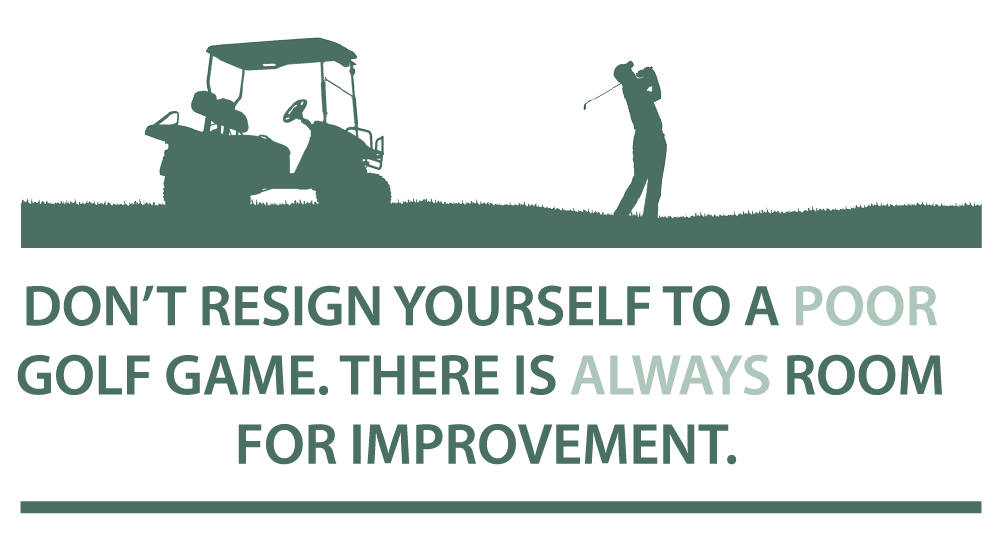
Final Thoughts
Don’t resign yourself to a poor golf game. There is always room for improvement. Pro golfers know where their weaknesses are and address them through fitness training, drills, and careful reflection. Train like a pro, and you will soon be able to play with the best of them at some of the best golfing destinations in the world.
